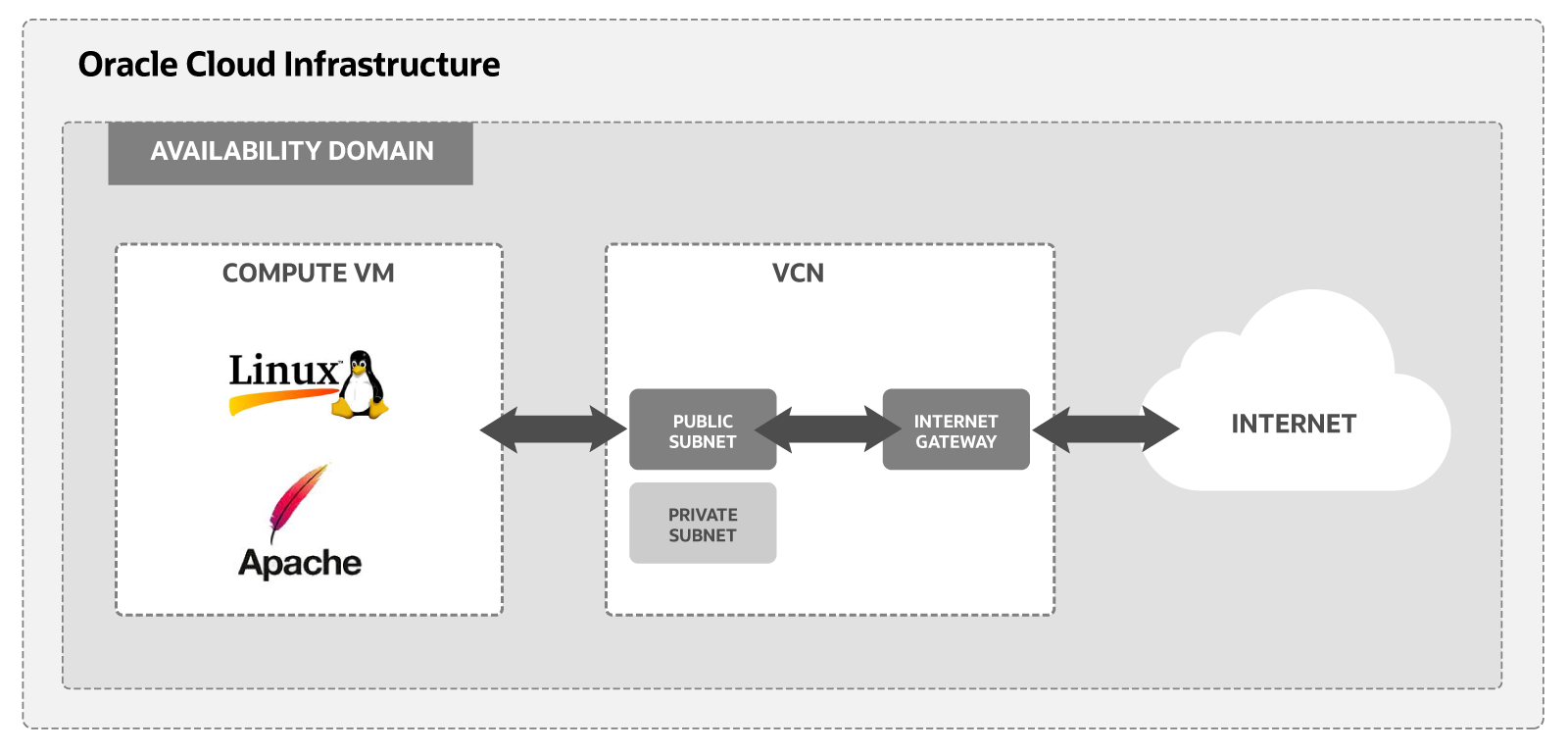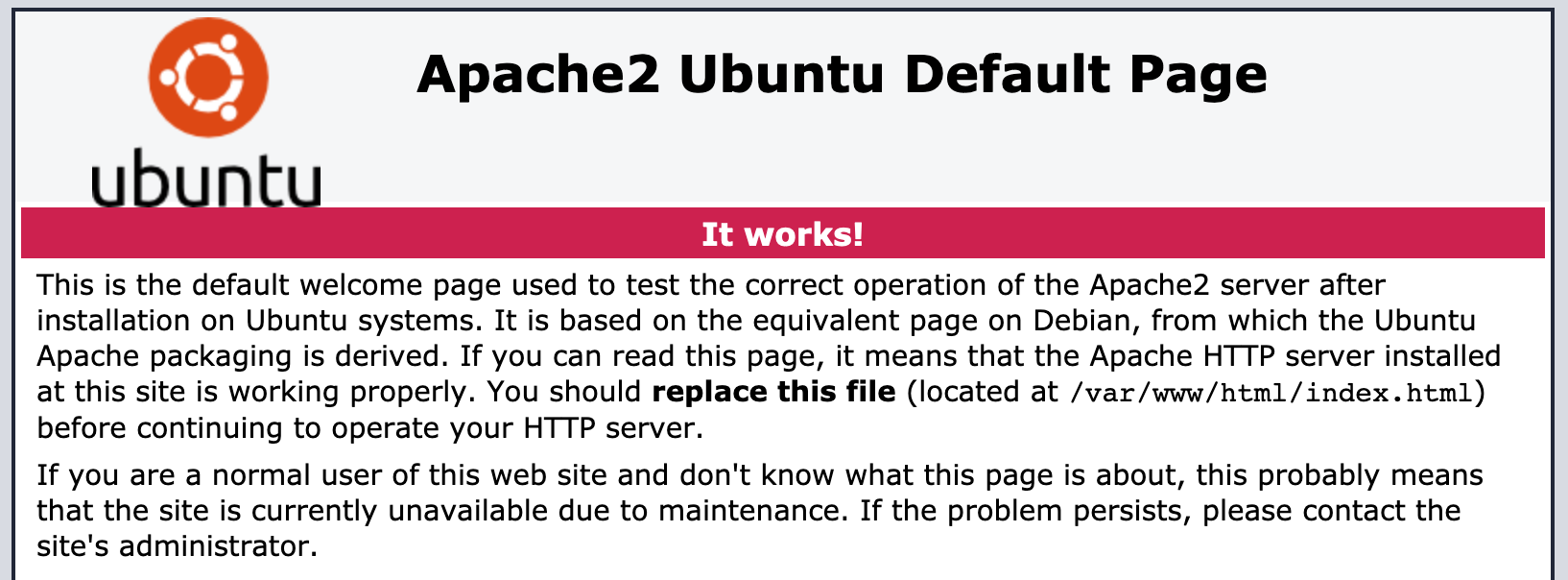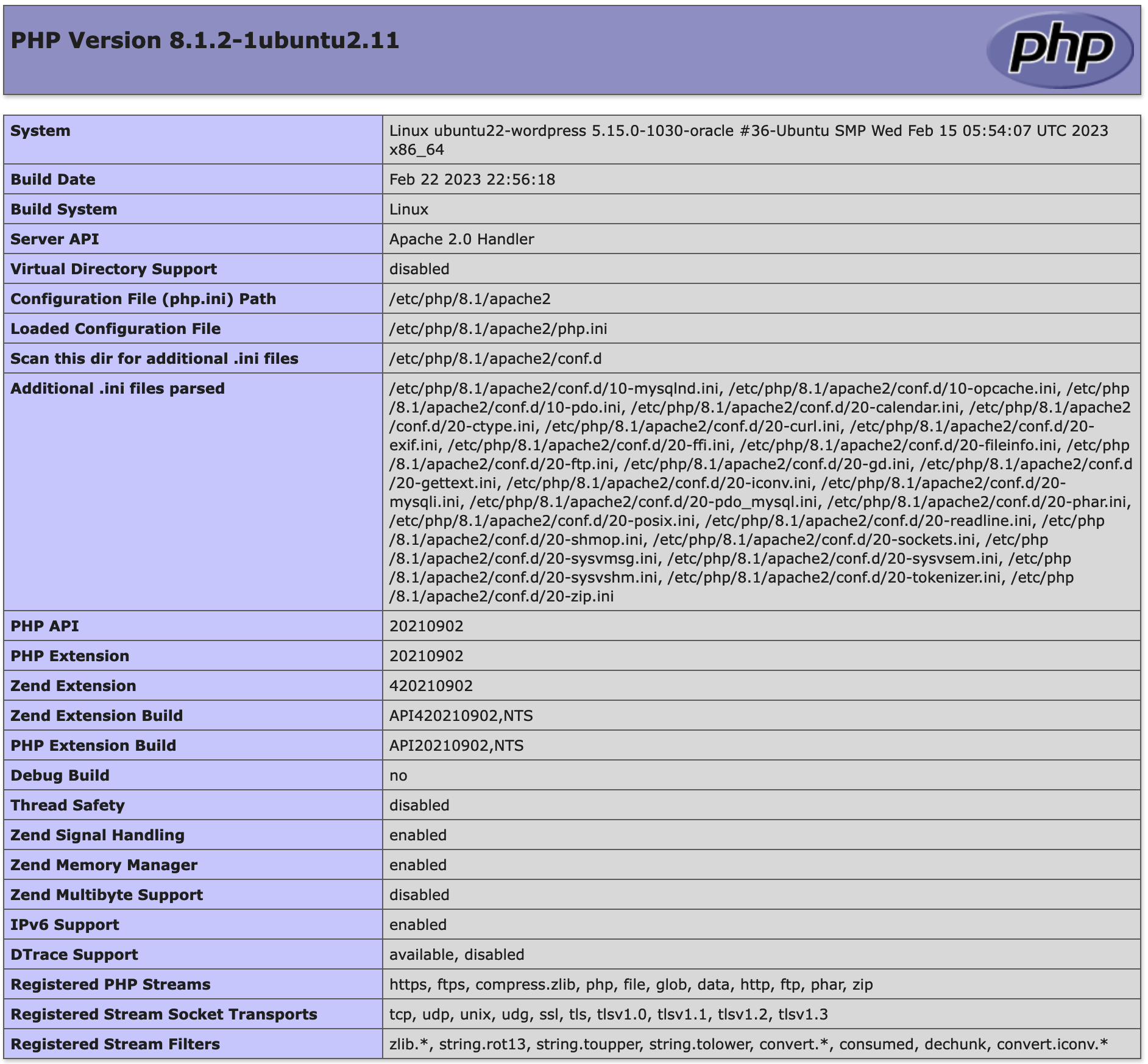Free Tier: Install Apache and PHP on an Ubuntu Instance
In this tutorial, you use an Oracle Cloud Infrastructure Free Tier account to set up a compute instance on the latest version of Ubuntu. Then, you install an Apache web server and PHP and access your new server from the internet. Finally, this tutorial covers all the steps necessary to set up a virtual network for your host and connect the host to the internet.
Key tasks include how to:
- Set up a compartment for your development work.
- Install your Ubuntu instance and connect it to your Virtual Cloud Network (VCN).
- Set up an Oracle Cloud Infrastructure virtual cloud network and related network services required for your host to connect to the internet.
- Set up
sshencryption keys to access your Ubuntu server.
- Configure ingress rules for your VCN.
- Configure Apache and PHP 8 on your instance.
- Connect to your instance from the internet.
Here is a simplified diagram of the setup for your Linux VM.

For additional information, see:
Before You Begin
To successfully complete this tutorial, you must have the following:
Requirements
- An Oracle Cloud Infrastructure Free Tier account. Oracle Cloud Infrastructure Free Tier.
- A MacOS, Linux, or Windows computer with
sshsupport installed.
1. Set up a Compartment for Development
Configure a compartment for your development.
Create a compartment for the resources that you create in this tutorial.
- Sign in to the Oracle Cloud Infrastructure Console.
- Open the navigation menu and click Identity & Security. Under Identity, click Compartments.
- Click Create Compartment.
- Fill in the following information:
- Name:
<your-compartment-name> - Description:
Compartment for <your-description>. - Parent Compartment:
<your-tenancy>(root)
- Name:
- Click Create Compartment.
Reference: Create a compartment
2. Install an Ubuntu Linux Instance
Use the Create a VM Instance workflow to create a new compute instance.
The workflow does several things when installing the instance:
- Creates and installs a compute instance running Ubuntu Linux.
- Creates a VCN with the required subnet and components needed to connect the Ubuntu Linux instance to the internet.
- Creates an
sshkey pair you use to connect to the instance.
To get started installing an instance with the Create a VM instance workflow, follow these steps:
The steps provided are for a Free Tier account. If you are using a paid account, the steps might differ from those shown here.
3. Enable Internet Access
The Create a VM Instance wizard automatically creates a VCN for your VM. You add an ingress rule to your subnet to allow internet connections on port 80.
Follow these steps to select your VCN's public subnet and add the ingress rule.
4. Set up Apache and PHP
Next install and configure Apache web server and PHP to run on your Ubuntu Linux instance.
To install and set up Apache and PHP, perform the following steps:
What's Next
You have successfully installed and deployed an Apache web server and PHP on Oracle Cloud Infrastructure using a Linux instance.
To explore more information about development with Oracle products, check out these sites:

